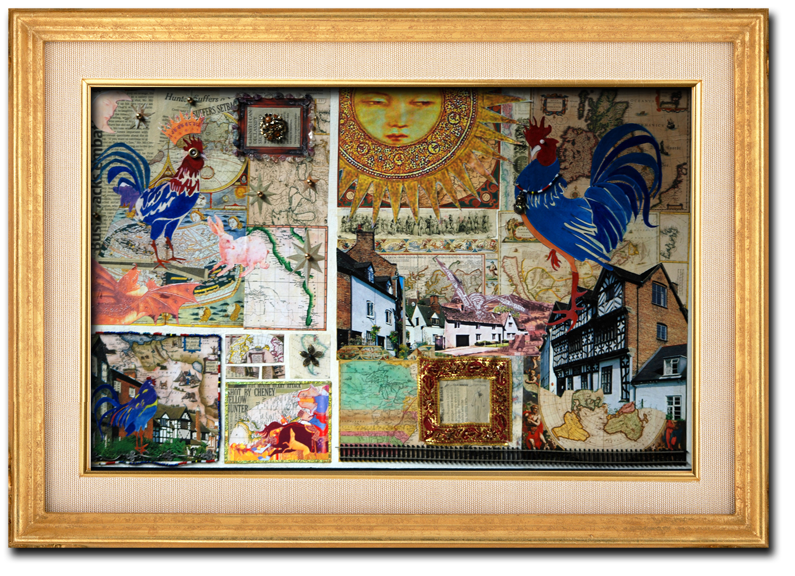A playful combination of empathy and surrealist automatism paintings

mixed media on masonite 8″x12″
All images © 2006-2007 Nancy Tranter
Empathy pervades both art-making and the experience of looking at art. Collage is a medium that offers a quick response for the technique of automatism.
Artists can increase empathy in others through their work, eliciting that feeling from people who may be numb from all the terrible things going on in the world, making the viewer more sensitive and vulnerable.
The Center for Building a Culture of Empathy describes empathy in four stages: self-empathy, or mindfulness of what’s going on inside oneself; mirrored empathy, meaning taking on another person’s emotion; imaginative empathy, which involves putting yourself in another person’s shoes; and empathic action, i.e., contributing to the well being of others. All of these aspects can play a role in art-making.
“Artists try to make a gift of what they have felt, What they have felt is the aggregate of what they have seen, and so it includes their own imaginings of what others have thought and felt.”
JESSE BALL
In the 1800s, philosophers of aesthetics wondered why art pleased people, and they came up with the idea that art activates viewers’ memories and emotions. The concept of ideasthesia used by artists also raises a question: Can we use ideasthesia to formulate a theory of art? The relationship between the two opposing forces of ideasthesia, i.e., the concept and the sensation, can be used to formulate a hypothesis about psychological events that underlie the process of either creating an art piece or appreciating (i.e., consuming) it[1]. So, empathy was the mysterious element that connected art and the viewer. In 1873, German aesthetics student Robert Vischer described this projection of emotion as einfühlung, “feeling into,” and, in 1909, British psychologist Edward Titchener translated the word into English as “empathy.” John Dewey’s notion of imagination being indispensable to all learning can be seen to be a “pathway” to empathy. Freud argued that psychoanalysts should embrace empathy to understand their patients.
Surrealist Automatism is a method of art-making in which the artist suppresses conscious control over the making process, allowing the unconscious mind to have great sway. Early 20th-century Dadaists, made some use of this method through chance operations.
“Artists, as a whole, are more empathic than non-artists. They’re more sensitive. They tend to have more fluid, permeable personal boundaries that allow them to connect to people in meaningful, emotional ways. That connection provides fuel for the creative process.”
Joe Behen, PhD, at SAIC
source: Janson’s History of Art, Robert Vischer, Walter Osika, Joe Behen, Jesse Ball, John Dewey, 1Danko Nikolić


